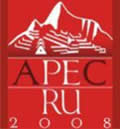United Kingdom
| Welcome |
| Peru in Brief |
| History |
| Geography |
| Government & Politics |
| Maritime delimitation between Peru and Chile |
| News |
Links |
| FOREIGN TRADE | ||
The trade balance was negative after the economic liberalisation in the beginning of the nineties, which prompted a fiscal and monetary adjustment, and also after the falling of prices of basic products in 1998, which was balanced with the fall of imports and growth of exports, particularly by Antamina since 2002. In 2003 the positive balance was 1.2% of GDP. |
||
|
|
||
Mining exports are the most important, although the non traditional such as textiles, fruti, vegetables, canned and frozen fish, steel and metals, doubled between 1994 and 2003 to US$ 2.6 billion. Between 2001 and 2004 they have grown 73%, exports grew 65% and the portion of this sector in the GDP went from 12.6% to 19.1%. In 2004 our export potential had presence in more than 170 markets and has created more than 1300 new export companies. Exports have created more than 400 000 jobs, both directly and indirectly. |
||
Imports, affected by protectionism and recession at the end of the eighties, recovered after 1990. After slow growth between 1998 and 2002, demand started recovering during the second half of 2002 and started to increase in 2003, particularly for intermediate goods, as a result of higher investment. |
||
| <BACK> |





